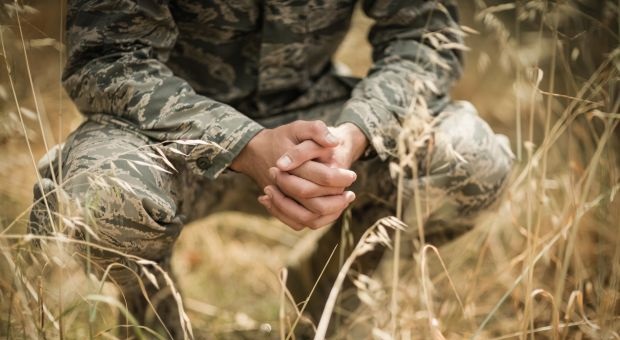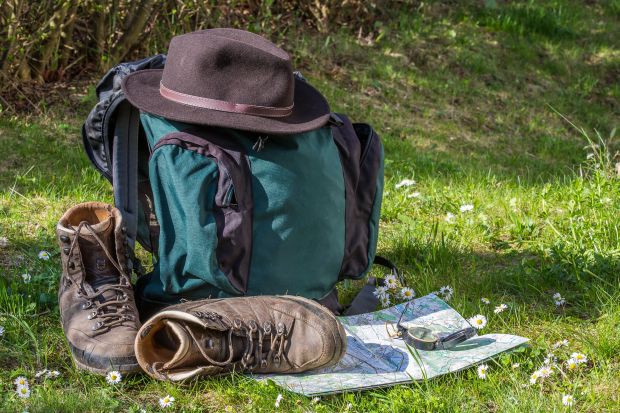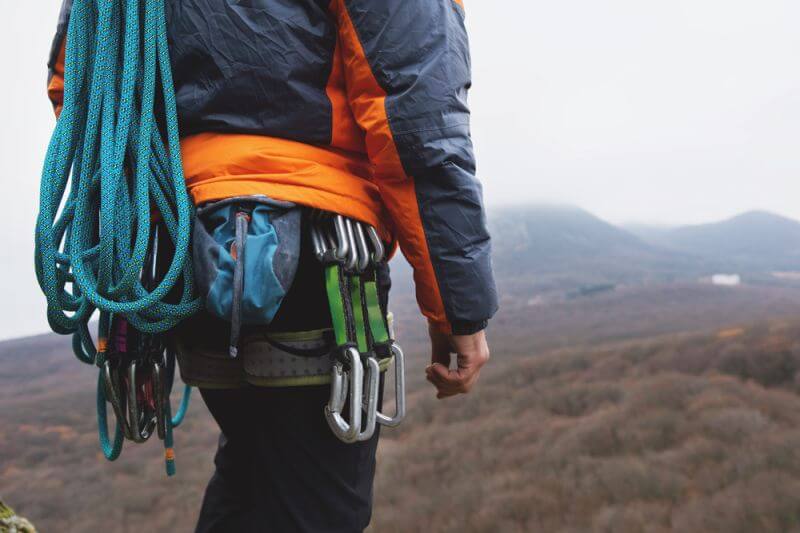- The following is an excerpt from Spec Ops Bushcrafting: The 8 Pillars Of Special Forces Wilderness Survival.
Let’s discuss the different types of warm weather you may encounter. Warm weather can be sub-categorized as arid, humid, tropical, dry heat. Temperatures in arid and dry locations can climb as high as 55 degrees C (130 degrees F) during the day and rapidly drop down to as low as 10 degrees C (50 degrees F) at night. This extreme shift in temperature can chill you to the bone if you don’t have the correct clothing. Temperatures in humid or tropical environments that are at low altitudes, temperatures range between 10 degrees C (50 degrees F) and 35 degrees C (95 degrees F). Summertime weather also often includes high humidity and heavy rainfall so you should consider the specific weather patterns in the area you are traveling to before you decide on what clothing to bring with you on your excursion.
When traveling to high heat climates you should consider wearing clothing that is lightweight, loose-fitting, and with colors that are on the lighter side of the spectrum since darker colors are known to absorb the suns heat.
Shirts
Contrary to popular belief wearing a T-shirt or not wearing a shirt at all in high heat situations when the sun is blaring down on you is not always the best way to cool your body and protect yourself from the harmful rays of the sun. In areas of high heat and low humidity look for shirts with long sleeves and light colors. If you are a woman and you need an undergarment to wear under your shirt look for a bra that will not cause you to rash in the high heat and that provides your body with good ventilation. As for fabrics to use in hot weather environments, there are several. Cotton is one of those fabrics that most people would suggest wearing in the heat because it soaks up all of the perspiration from your body and allows it to evaporate slowly and allows the heat to be wicked away from your skin.
One of the problems with cotton is that when it gets wet it tends to bunch up and cause chafing. While cotton is not a bad choice, there are other options out there. There have been some amazing advances in fabric technology due mainly to research and development resulting as a byproduct of almost 2 decades of continuous wars being fought by our military in very extreme high and low temperature environments. Some of the advances in polyester based knits being used to make clothing these days you will find to do an excellent job at letting
Moisture from your sweat evaporate quite quickly which will help to keep you much cooler when you are moving and will then dry quickly when you stop. There are even some wool fabrics out there that will help keep you cool from the summer heat. Marino Wool for instance has small “pockets” weaved into the fabric that absorb water and then allow it to seep out slowly which will help greatly in keeping your body temperature down. An added bonus of wool is that it does not do well at absorbing body odor (if that is one of your concerns).
Pants
For pants you should follow the same rules as you did for shirts by selecting fabrics that are lightweight, loose-fitting, and have light colors. Look for pants that perform multi-functions such as pants that you are able to remove the pant-legs from and transform them into shorts. Pants that have multiple pockets with Velcro or zipper flaps are an added bonus so you have a place to secure your gear and valuables.
Shoes
Boots are without a doubt one of the most important pieces of clothing and equipment that you can have when you are spending time in the outdoors where you are putting a considerable amount of mileage on your feet. A good pair of boots can make the difference between an enjoyable experience and a nightmare scenario where every step brings excruciating pain. A survival situation only compounds the need for a pair of shoes that fit correctly and are designed to handle any abuse that you put on them without failure.
When searching for the right pair of outdoor hiking boot, fit is everything. To find the right fit you first want to ensure that the “last” which is the wooden foot that the manufacturer chooses to build the shoe around is a match for your individual foot size. If you try on a shoe and your foot either has way too much room left to move around in the shoe or your foot seems to swell over the shape of the bottom of the shoe then the last is most likely not a good fit for you.
What you want is a shoe that is snug around your foot with a hiking sock on. If you are buying boots and your feet are not swollen from walking, wear a thicker pair of socks to represent your foot size after you have been walking on them for some time. If you can’t find a pair of shoes that seem to fit the way you want them to consider seeing your podiatrist to get custom made orthotics. Blisters are one of the biggest problems that the wrong shoes and socks can cause. Blisters are caused by friction between your foot and your boot or sock.
Hats
While most people think of hats worn in the summertime only provide the eyes with relief from the sun’s rays and assist in keeping sweat from running down your face, the fact is that cooling technology has actually come a long way and there are now several fabrics on the market that provide evaporative cooling technology into their hats and other garments that assist in keeping the body temperature down.
Raingear
Raingear is always a good thing to have with you whether you are venturing out into the wilderness, or simply to keep in the trunk of the car you use to drive to work in. while raingear comes in many forms and configurations, from 2 peace to jump suits to ponchos; all raingear have one thing in common and that is that they all provide a non-porous waterproof surface that will protect you from the rain, snow, ice, and wind.
We are often confused when searching for raingear between the terns “water proof” and “water resistant”. While water resistant will help to keep you dry it is not waterproof and it will eventually succumb to heavy rain leaving you soaked through. The reason people choose water resistant over water proof is that waterproof materials will not allow your body to wick off perspiration when you are moving and there is the possibility that you could experience discomfort or even cold injury if you don’t find another way to dry off or keep warm.
That said, if you are in a stationary or “static” position where activity is limited, it is smart to have a set of waterproof raingear to put on in order to keep you dry when the rain comes down. Waterproof ponchos have the added benefit of making great shelter tops when getting yourself out of the elements is desired.
Work Gloves
The idea behind finding the perfect pair of gloves seems simple but in fact it is not that easy. In reality, you may need to have several different pairs of gloves to wear when doing different activities. An easy way to classify what gloves you need for the job is to “weight” the following areas and then determine which gloves are the best for you:
- Durability & Protection
- Fit & Dexterity
- Comfort & Aesthetics
You may find it difficult to find one single set of gloves that meet all of the above mentioned criteria equally. For instance, while a form fitting pair of leather cloves will provide excellent protection from friction and heavy labor intensive work, they will not do a great job at keeping your fingers warm in the winter. Again, you may need to get either several pairs of gloves or look for a glove “system” that can be modified to meet several criteria by simply switching out with different system components for different activities.
Hiking Boots & Camp Shoes
Much like gloves, hiking boots are not an easy thing to choose as it is rare to impossible to find a single pair of shoes that will do a good job at every activity you may find yourself doing. What you want to do is to look for a high-cut, full-grain leather hiking boot to offer you maximum ankle support and durability when traveling on foot in the wilderness. For short walks around your campsite you can get a second pair of boots with a low or mid-cut for adequate but not superior ankle support and made from a more breathable synthetic or leather-synthetic mix.
You may also want to look into a third pair of shoes designed specifically for protecting your feet in the water if you expect to be walking across water obstacles or fording rivers, or searching for food in streams and creeks. A good shoe for this is either a well-made pair of waterproof sandals or a good pair of water shoes.
Socks
The same factors apply to socks regardless of the temperature. That said, you don’t have to worry so much about the insulating qualities of your socks in the summer time and you definitely want a sock that will allow your feet to sweat and that wicks away any remaining moisture so that your feet remain dry.
Sunglasses
While the range of sunglass quality and price is quite large, the only factor that really matters when looking for a good pair of sunglasses is do they block 100 percent of UV rays from the sun. When you see the word “Polarization” on your sunglasses it simply means that the glasses are designed in such a way that they can reduce the amount of glare that comes off reflective surfaces such as water or pavement.










TR edmonds | May 29, 2018
|
Thank You for your service, With guys like this I feel like a real slacker only serving 4 years in the MP’s
Don Lilly | May 29, 2018
|
Any tips to prevent dehydration is serious heat?
Alex | June 28, 2018
|
Hello,
Thank you for commenting on our article. Maybe this one can answer to your question:
http://www.survivopedia.com/how-to-get-water-from-plants/
Stay safe,
Alex from Survivopedia
Frank | June 2, 2018
|
A nice complete article. No specific types of material was mentioned, but I personally can’t stand anything except cotton and I wear either nylon or cotton pants (Outdoor style clothes with pockets and even sun protection, sometimes the “Kilimanjaro” types that convert into shorts) or ripstop BDU’s. I wear loose fitting tee shirts and same for the pants.
I know a lot of guys are into wearing Under Armor, but the synthetic stuff drives me nuts.
I’m glad gloves were brought up again. I always hate it when a guy wants gloves or he puts on a pair and he gets mocked for it. It prevents cuts and lacerations that might become infected.
One final thought I had is that while I don’t have kids, it would seem wise for parents to buy larger shoes for them to wear as they grow.
Sherry | June 3, 2018
|
Is this program not available any more? After I entered all information including payment it had a message that this is no longer available.
สุขภาพ | June 26, 2018
|
Health and well-being must be done regularly in order to be in every state.
Gclub | April 10, 2019
|
This is really an amazing article. Your article is really good and your article has always good thank you for information.
Gclub | April 10, 2019
|
Excellent Post as always and you have a great post and i like it